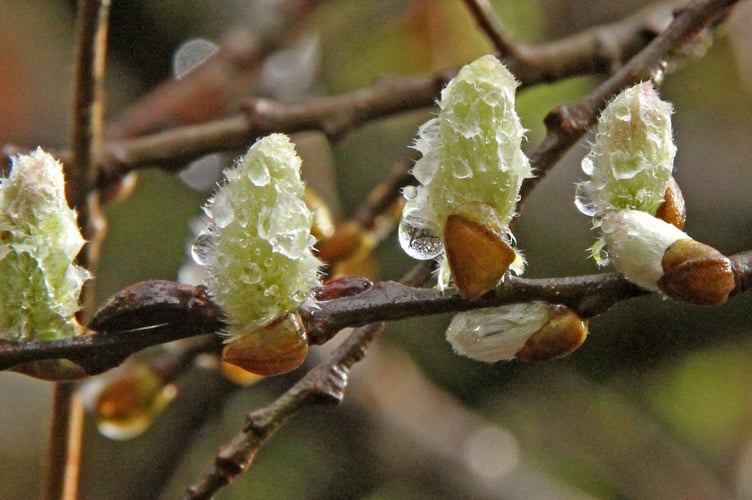I TOOK a walk down to Trehunsey Bridge and before I got to the River Tiddy, I noticed lots of dog’s mercury growing beneath overhanging trees on the wide waste ground alongside the road.
They were all out in bloom with their greenish clusters of flowers. This plant spreads on creeping rhizomes, is extremely poisonous and gives off a strong smell to attract pollinating insects.
What looked like a plump, young cat appeared on the road ahead of me walking all over the road but when I caught it up, I could see it was a fully grown hedgehog. I photographed it and made sure it was on the side of the road, but when I downloaded the picture onto my computer, I saw that it had no right eye. This made me wonder if it could see with its left eye or was it completely blind, which would explain its wondering onto the road in daylight hours.
Looking, as always, into the hedgerow I spotted what looks like some kind of fungus, but after clearing the surrounding bramble away I could see that they were a couple of clumps of slugs eggs. I think slugs lay their eggs in the late autumn but they don’t hatch until the spring, that seems to be a long time to be on the hedge where some small creature might gobble them up.
A sudden movement on the hedge caught my eye and I saw what looked like a field vole, with a blunt nose, looking up at me. It quickly disappeared back into a system of tunnels that they dig in the hedge and as they don’t hibernate through the winter, I think it came out for a quick meal of grass and green leaves.
I saw one willow tree on my walk and it already had catkin buds on its branches. The real name for these flowers is Pussy Willow and they fully open in March before the leaves break out. Bunches of small flowering branches were once picked to provide decoration in homes, but the young thin wands in the spring are woven into baskets. The thicker wood of the tree when twelve to fifteen years old, is used to make cricket bats.
Back in the village there are at least a million three cornered leeks coming into bloom with their white bell-shaped flowers on long triangular, in cross section, stems. These plants are extremely invasive and are growing everywhere in the village including the churchyard, but whoever brought them to Quethiock many years ago probably thought they would look lovely in their garden.
There are also several places around the houses where Alexanders are growing, but not spreading like the afore mentioned leeks. These are named after Alexander the Great who ruled Macedonia back in the 17th century.




